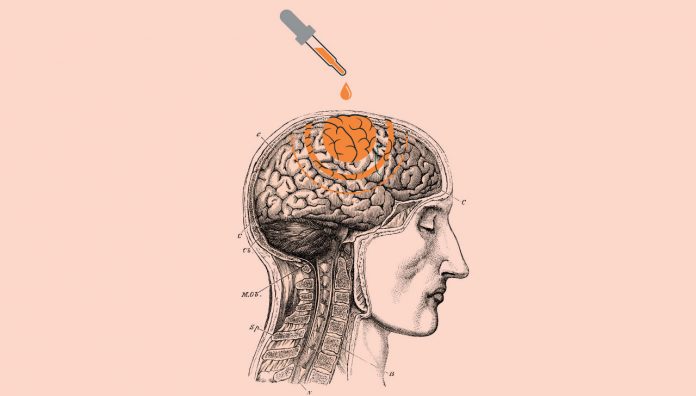The discovery of sodium thiopental ushered in the era of modern intravenous anaesthesia, but its darker side as a ‘truth serum’ and use in lethal injections made it a household name.
Sodium thiopental (also known as sodium pentothal) was first synthesised by US researchers Ernest H. Volwiler and Donalee Tabern at Abbott Laboratories, Ohio in 1936. They had researched over 200 different compounds in the search for an injectable anaesthetic before they found it, and were impressed by its easy action with no muscle twitching or delirium. Sodium thiopental is believed to work to enhance responses to gamma-aminobutyric acid (GABA), depressing excitability by increasing membrane conductance and producing a net decrease in neuronal excitability to provide anaesthetic action.
Its use in anaesthesia was as an ‘induction agent’ to place the patient into an unconscious state before another drug (usually ether) was administered to maintain the anaesthetic plane.
Wartime disaster
Following the discovery of sodium thiopental, its use became widespread as an anaesthetic. But in the first years of World War II, it became infamous. Sodium thiopental overdose (or inappropriate dosing) has been cited as the cause of the deaths of hundreds of victims of the Japanese attack on Pearl Harbor in 1941. Doctors treating severely injured casualties used the then-new drug to sedate their patients before surgery. But as the doctors were inexperienced with the drug, it is believed they administered it too quickly or in too high a dose, resulting in cardiovascular collapse and/or respiratory arrest. It is unknown precisely how many patients died from the drug’s misadministration, but it is estimated to be in the hundreds. Medical historians cite this disaster at Pearl Harbor as the impetus to establish anaesthesia as a distinct medical specialty in the modern era.
Interrogation tool
As well as its use as an anaesthetic, sodium thiopental is known as ‘truth serum’, owing to its use from the 1940s onwards by government agencies in various countries during interrogations to elicit information from subjects. The accuracy of information gained during these interrogations is dubious as, despite sodium thiopental having the ability to relieve memory blocks, interviewees aren’t guaranteed to be truthful, only less inhibited.
Sodium thiopental has also been used in lethal injection executions in the United States, either as the sole drug or in conjunction with other drugs. In 2011 the European Union (EU) placed restrictions on the export of sodium thiopental, restricting its shipment if the intended purpose was for lethal injection. This action by the EU led to the US’ adoption of pentobarbital as the main drug used in lethal injections, as the only factory producing sodium thiopental is located in Italy.
Use today
In the US, sodium thiopental has been superseded by propofol for use in anaesthesia as it wears off faster, with fewer side effects – and avoids the restrictions on medical professionals’ ability to import it.
References
- National Inventors Hall of Fame. Ernest H. Volwiler. At:https://www.invent.org/inductees/ernest-h-volwiler
- New South Wales Health. Liverpool Hospital ICU Guideline: Pharmacology. Thiopentone. At: https://www.aci.health.nsw.gov.au/__data/assets/pdf_file/0019/306424/liverpoolThiopentone.pdf
- Crowhurst J. The historical significance of anaesthesia events at Pearl Harbor. Anaesthesia and intensive care. 2014 Jul;42:21-4. Crowhurst JA. The Legacy of the Anaesthesia ‘Events’ at Pearl Harbor, 7th December 1941. Proceedings of the History of Anaesthesia Society. 2015; 48:85-95.
- Rinde, Meir. Science History: Winter. Stranger Than Fiction Is there any truth in truth serums? 2015. At https://www.sciencehistory.org/distillations/magazine/stranger-than-fiction
- Death Penalty Information Centre. State by State Lethal Injection. At https://deathpenaltyinfo.org/state-lethal-injection




 ‘We’re increasingly seeing incidents where alert fatigue has been identified as a contributing factor. It’s not that there wasn’t an alert in place, but that it was lost among the other alerts the clinician saw,’ Prof Baysari says.
‘We’re increasingly seeing incidents where alert fatigue has been identified as a contributing factor. It’s not that there wasn’t an alert in place, but that it was lost among the other alerts the clinician saw,’ Prof Baysari says.


 Beyond the arrhythmia, AF often signals broader pathological processes that impair cardiac function and reduce quality of life and life expectancy.5 Many of these conditions are closely linked to social determinants of health, disproportionately affecting populations with socioeconomic disadvantage. Effective AF management requires addressing both the arrhythmia and its underlying contributors.4
Beyond the arrhythmia, AF often signals broader pathological processes that impair cardiac function and reduce quality of life and life expectancy.5 Many of these conditions are closely linked to social determinants of health, disproportionately affecting populations with socioeconomic disadvantage. Effective AF management requires addressing both the arrhythmia and its underlying contributors.4  C – Comorbidity and risk factor management
C – Comorbidity and risk factor management Warfarin
Warfarin




